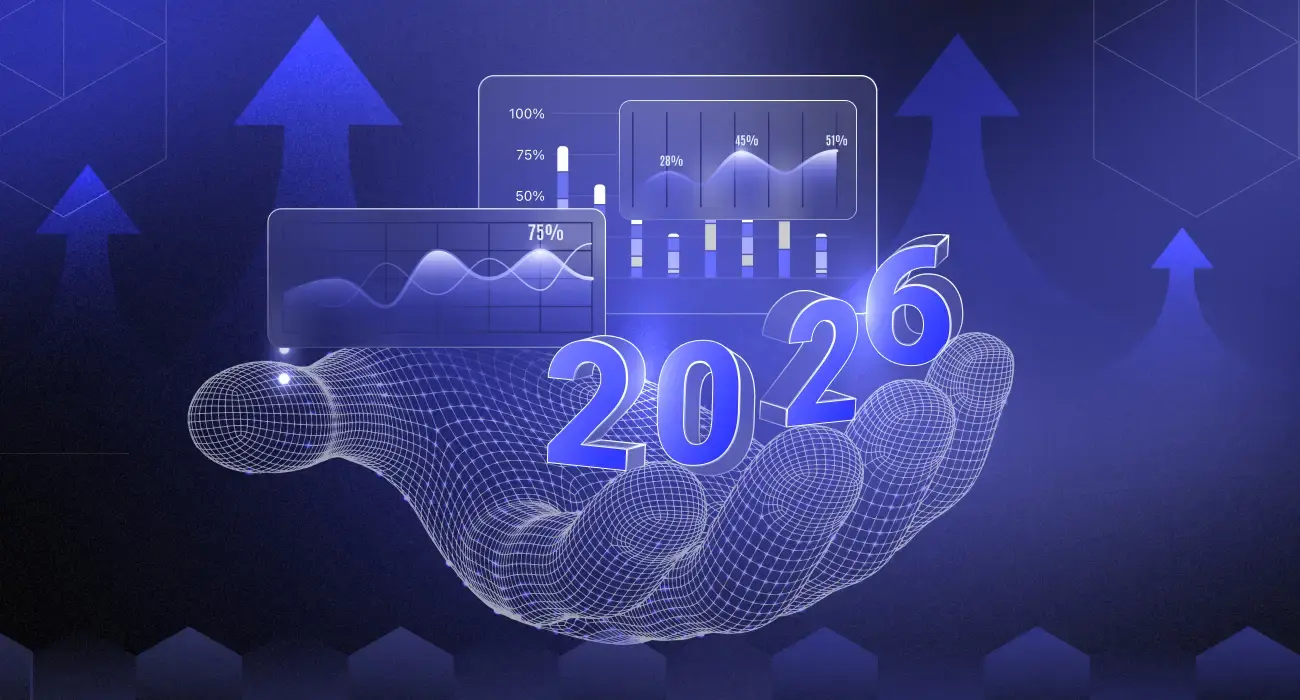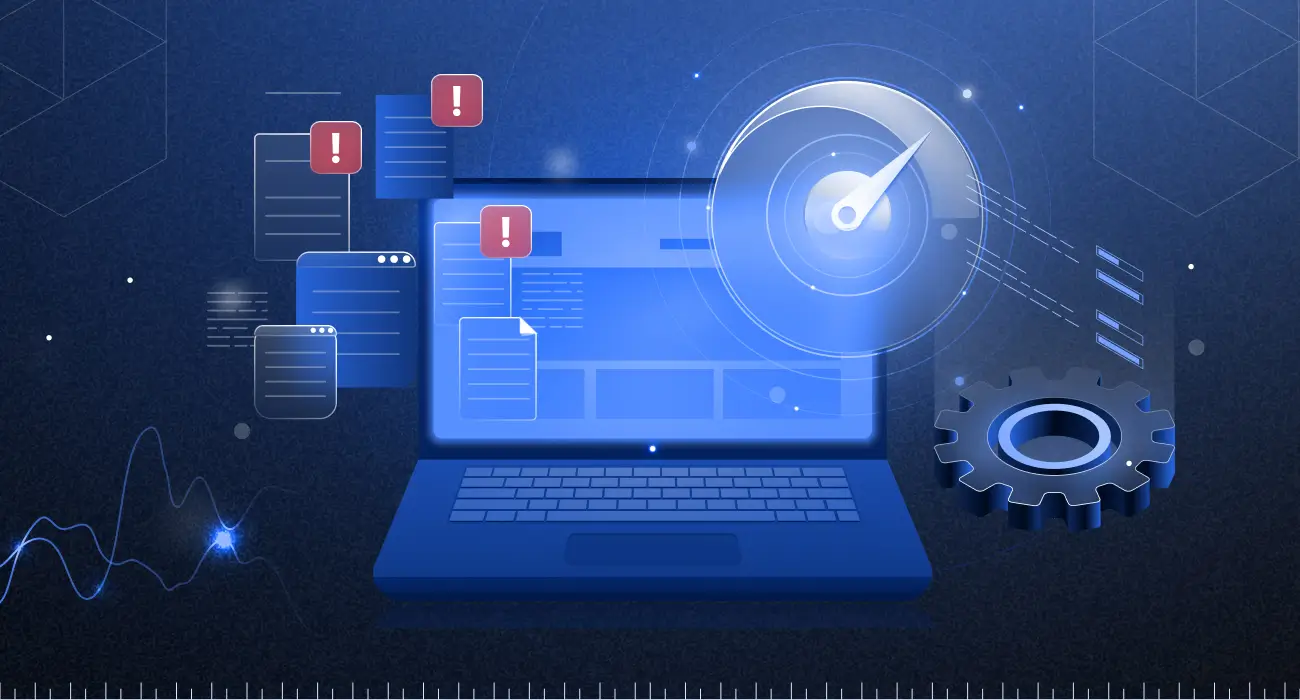Demands on engineers are constantly increasing. Consumers, investors, executives—everyone wants their IT teams to do more with less.
So as an IT leader, it’s critical to know where you’re devoting resources and whether your efforts are moving the needle. A data-driven approach to software engineering helps you visualize how work is being done, the quality and quantity of output, and how to improve your team’s daily work life.
While taking the time to adopt a data-driven approach may seem like a distraction from design and coding, it presents significant benefits:
- According to data from Accenture, data-driven organizations have an annual growth rate of 30% or more
- McKinsey found that organizations that use users’ behavioral insights outperform their competitors by 85%
- McKinsey also has stated that by 2025, most employees will use data to optimize nearly every aspect of their work
Adopting a data-driven approach is certainly worth the investment. Here’s how to get started within your own organization.
What is a data-driven approach to engineering?
Data-driven engineering collects information regarding real user behavior to help software engineers prioritize the products, features, and designs that will drive deeper user engagement.
Additionally, a data-driven approach involves optimizing the working process of your software engineering team to generate more efficiency, better results, and greater customer satisfaction.
Generally, there are three ways to make decisions in software engineering:
- Human intuition. While a powerful tool for brainstorming and innovation, intuition cannot tell you which features and designs will be most used and impactful for the customer.
- Usability studies. There are plenty of insights from these studies. But ultimately, they take place in an artificial environment and do little to show you how your application will function in the marketplace.
- Data. By seeing how users actually engage with your software, you can base your development efforts on solid information and insights.
While the first two approaches have their benefits, data-driven is the only approach that bases your decisions on verifiable facts. This mitigates risk and improves the odds of success.
There are many aspects to a data-driven engineering approach. Here are some of the most important.
Company vision
While it’s not technically a pillar of data transformation, a strong company vision provides a foundation that enables everyone to determine KPIs and OKRs. As such, leadership plays a critical role in defining this vision and clarifying the “why” behind your efforts.
Key performance indicators (KPIs)
Key performance indicators (KPIs) measure your ongoing business performance, from profitability to other mission critical metrics. KPIs are the “North Star” to keep everyone rowing in the same direction.
Objectives & key results (OKRs)
Objectives & key results (OKRs) are more transitory than KPIs, often limited to specific achievements or improvements within a particular time frame (month, quarter, or year). Generally, OKRs focus on smaller accomplishments that, over time, drive KPIs.
Engineering metrics
While KPIs and OKRs are generally simpler to define—because they tie back to revenue and profitability—engineering metrics are more fluid. They depend on specific priorities within your engineering department:
- What constitutes “good” software development?
- What constitutes a “good” engineer or developer?
- What are the standards we expect from engineers?
- What defines our quality of work?
If you don’t define the expected quality of your work product, you can’t be upset when engineers don’t meet that bar. As such, engineering metrics are necessary for consistent productivity.

If metrics are so important, then learn how you can manage them on Middleware platform.
Positive behavioral metrics
Software development depends heavily on personnel quality. Your team’s mental and physical state determines your ability to produce efficiently. As such, it’s important to quantify areas like physical health, mental health, morale, motivation, energy, etc., to keep your team motivated and engaged, even during difficult times.
What are the benefits of data-driven engineering?
The first step to adopting a data-driven approach is to generate buy-in among your team. If your developers don’t understand its benefits, they’re not going to be motivated to include it in their process.
Business Impact
Every business function should want to justify its existence by measuring impact. A data-driven approach enables software engineers to show that their long hours and constant iteration are actually contributing to the business’s bottom line.
Real-time observability
Part of a data-driven approach is investing in appropriate enablement technologies. One particularly helpful class is real-time observability. These tools enable you to view your entire organization’s logs, metrics, and traces in real-time. By identifying errors at the source, you can fix small issues before they balloon into major problems.
Get real-time metrics, traces and logs in one place with Middleware’s unified dashboard.
Team coordination
When you don’t have insight into where your team is putting their efforts, it can be difficult to coordinate with various arms of the business. A data-driven approach enables transparency to answer questions about your team’s workload, timelines, and output.
Continuous improvement and optimization
It’s impossible to improve or optimize without a way to measure where you’ve been and where you’re going. Data-driven engineering provides the insights and metrics you need to track improvement across time. That way, your team can make the incremental changes needed to fully optimize your resources and efforts.
Risk mitigation
Uninformed decisions can be costly. At worst, they can threaten your business’s very existence. You can reduce errors and mitigate your risk exposure by basing decisions on real data.
How does a data-driven approach work?
Once you’ve generated buy-in among your team regarding the value of data-driven engineering, now you put it into practice.
Data collection
The first step is to collect your data. In an increasingly distributed world, this is easier said than done. Here are some key components of modern, cloud-native observability that make distributed data collection possible.
Metrics
Metrics are the numerical values that represent and describe the overall behavior of a service or component measured over time. Examples include timestamps, names, and values. Because they’re structured by default, they’re easy to query and optimize for storage.
For observability purposes, metrics enable engineers to define what is normal and what is not. However, they do have limits. When triggered, they can indicate when maximum or minimum thresholds are reached, not why the issue occurred or what the user experiences on the front end.
Traces
If metrics tell you that an issue is occurring, traces can help you investigate the precise service causing the issue, enabling developers and engineers to identify and fix the root cause quickly. Through traces, engineers can analyze request flow and understand the entire lifecycle of a request in a distributed application, as each operation is encoded with critical data related to the microservices performing that operation.
Logs
Logs are immutable, timestamped records of discrete events that happened over a set time frame within an application. Developers can use logs to uncover emergent and unpredictable behaviors within each component in a microservices architecture.
There are three types of logs:
- Plain text
- Structured
- Binary
Every component of a cloud-native application emits one of these log types. This can lead to a lot of noise. Thus, it is critical for engineers to centralize and analyze these logs to uncover actionable insights from them.
Data measurement & analysis
Once you have solid methods for collecting key data, the next step is to interpret that data. Here are a number of insights that are key to optimizing software development and performance.
Feature usage
Feature usage focuses on user behavior surrounding a particular product feature rather than the overall product itself. These metrics enable developers to drill down into which aspects of the product generate engagement and offer the most value.
Entry points
For complex, distributed systems, functional entry points are critical to a seamless user experience. Collecting insights into entry points enables you to identify high load-bearing assets, so you can prioritize resources to best service those assets.
Errors
There are three constants in life: death, taxes, and software errors. The key to providing seamless user experiences is to identify errors in real-time, determine the root cause, and fix the error as quickly as possible. Full-stack observability tools enable you to do this across your entire tech stack.
Success criteria
By collecting data surrounding key success criteria, you can justify building or cutting certain features, fix usability issues, and optimize reliability and performance. This enables you to justify the bottom-line contribution of your development efforts to the business as a whole.
Team efficiency
Although much of the data you collect will focus on external factors, you can also collect internal data to make your team work more efficiently. This starts with prioritizing products, features, and designs that generate the most value for the customer but also looking at where individual engineers spend their time. Small adjustments to individual and team behaviors can have exponential benefits.
Data-driven decisioning
Once you’ve collected insights into key aspects of software usage and team performance, you can use those insights to make decisions that drive the business forward.
Resource allocation
Development teams have limited resources, and it is important to allocate those resources where they can have the biggest impact. Data gives you the ability to identify which products, features, updates, etc., have the greatest potential for impact.
Task & project prioritization
Individual team members are responsible for ensuring their daily, and weekly efforts are contributing to long-term goals. As such, managers should leverage data to help their teams direct their efforts in the most impactful direction possible.
Strategic planning
As CIOs are increasingly responsible for contributing to the strategic development of the business, you can leverage data to inform these key strategic decisions—and remain profitable.
Examples of data-driven engineering
Given those broad concepts mentioned above, it may be helpful to understand how a data-driven approach can be part of your day-to-day operations.
- Incorporate data into daily stand-ups to build accountability and prioritize activities in real time
- Use data in 1-on-1s to provide objectivity to your evaluation of a developer’s or engineer’s performance.
- Enrich your sprints by using data enrichments to track performance and efficiency, and find areas for improvement
- Provide meaningful retrospectives by basing your analysis on data
- Identify which features generate value for the business and user to prioritize team activities
- Give leadership insight into your team’s performance and progress—so they can see the value you add to the business
- Test new business practices to see whether your new methods move the needle
Ultimately, data should play a key role in every step of the development process. The more it becomes embedded within your organization, the more you’ll be able to realize its benefits.
How to empower your engineers to adopt a data-driven approach
For all its benefits, a data-driven approach won’t work without one critical component: your engineers actually have to adopt it. There is a cultural component to this, but equipping your team with the right tools is just as critical.
At its core, data-driven engineering asks the following:
- Are your teams prioritizing the right projects?
- Are your teams moving the needle on user experience and business objectives?
- Is your organization allocating the proper resources to meet your objectives?
If you want your engineers to adopt a data-driven approach, you need to encourage them to ask these questions (culture) and give them the tools necessary to answer them (technology).
Here are some tips to empower your engineers with this approach:
- Involve every member of your organization in data-driven engineering—not just engineering and C-suite executives.
- Instill data-driven methodology into every step of the process (e.g., build-measure-learn)
- Focus your efforts not only on building great software but measuring its impact and learning from those measurements
- Create processes that encourage continuous improvement and interaction
- Invest in observability software to provide the insights necessary to adopt a data-driven approach
Observability tools are central to data-driven engineering. By providing full-stack visibility into every aspect of your operation, engineers can collect and implement information throughout every development stage.
The best observability platforms will enable you to:
- Pull metrics, traces, and logs into a unified dashboard you can share with your team
- Reduce the need to go back and forth between various platforms to see and fix problems
- Drill down to identify root causes of issues and high load-bearing assets
- Improve ability to respond to challenges—both internal and external—to remain adaptive and innovative
To learn more about how cloud-native observability is key to adopting a data-driven approach in your organization, check out our latest whitepaper here.



